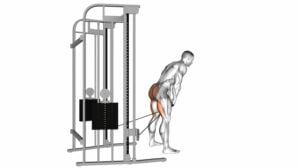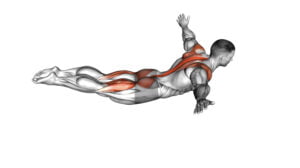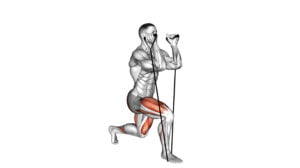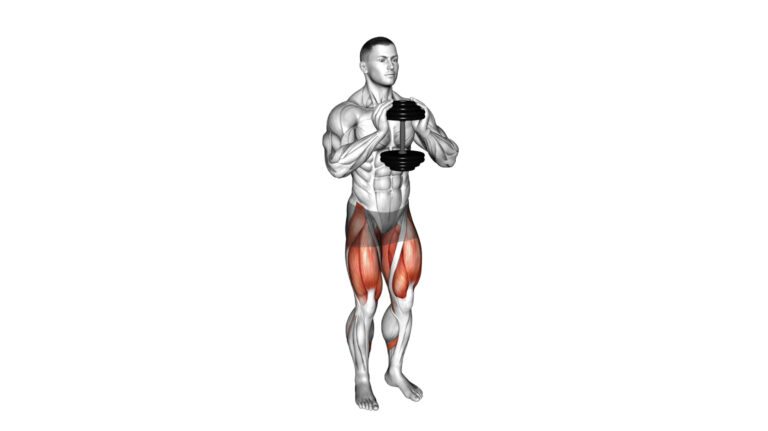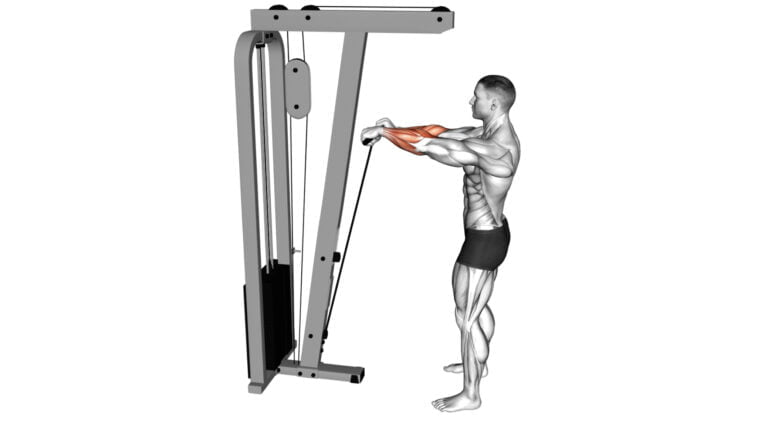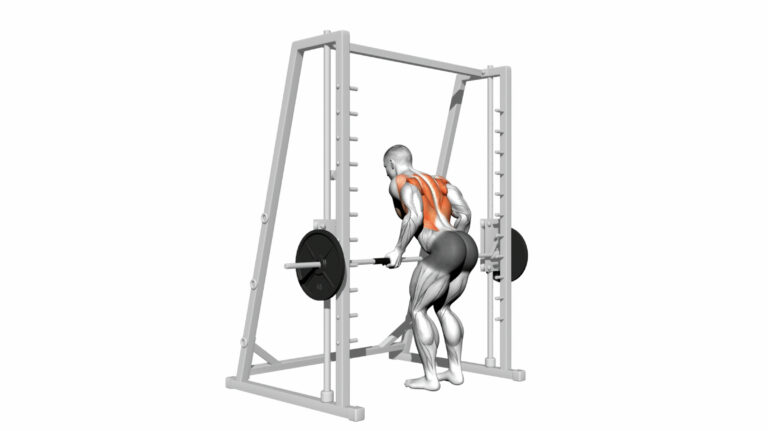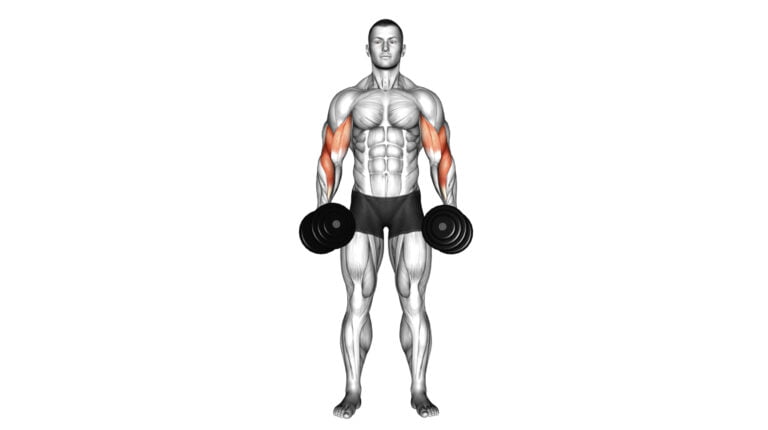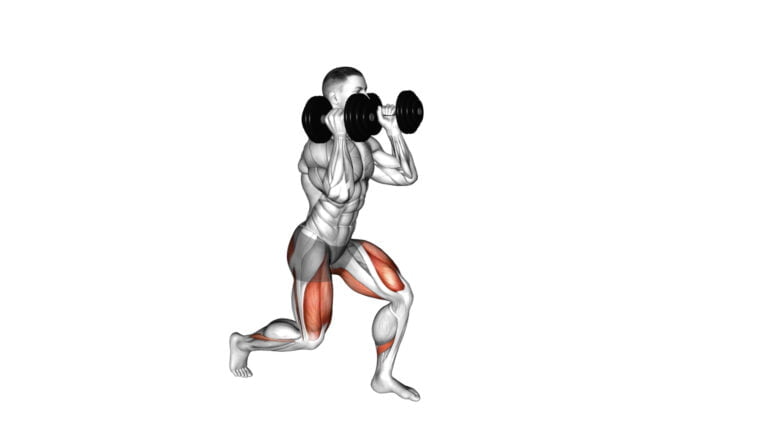10 Effective Exercises for Multifidus Muscles You Need to Try
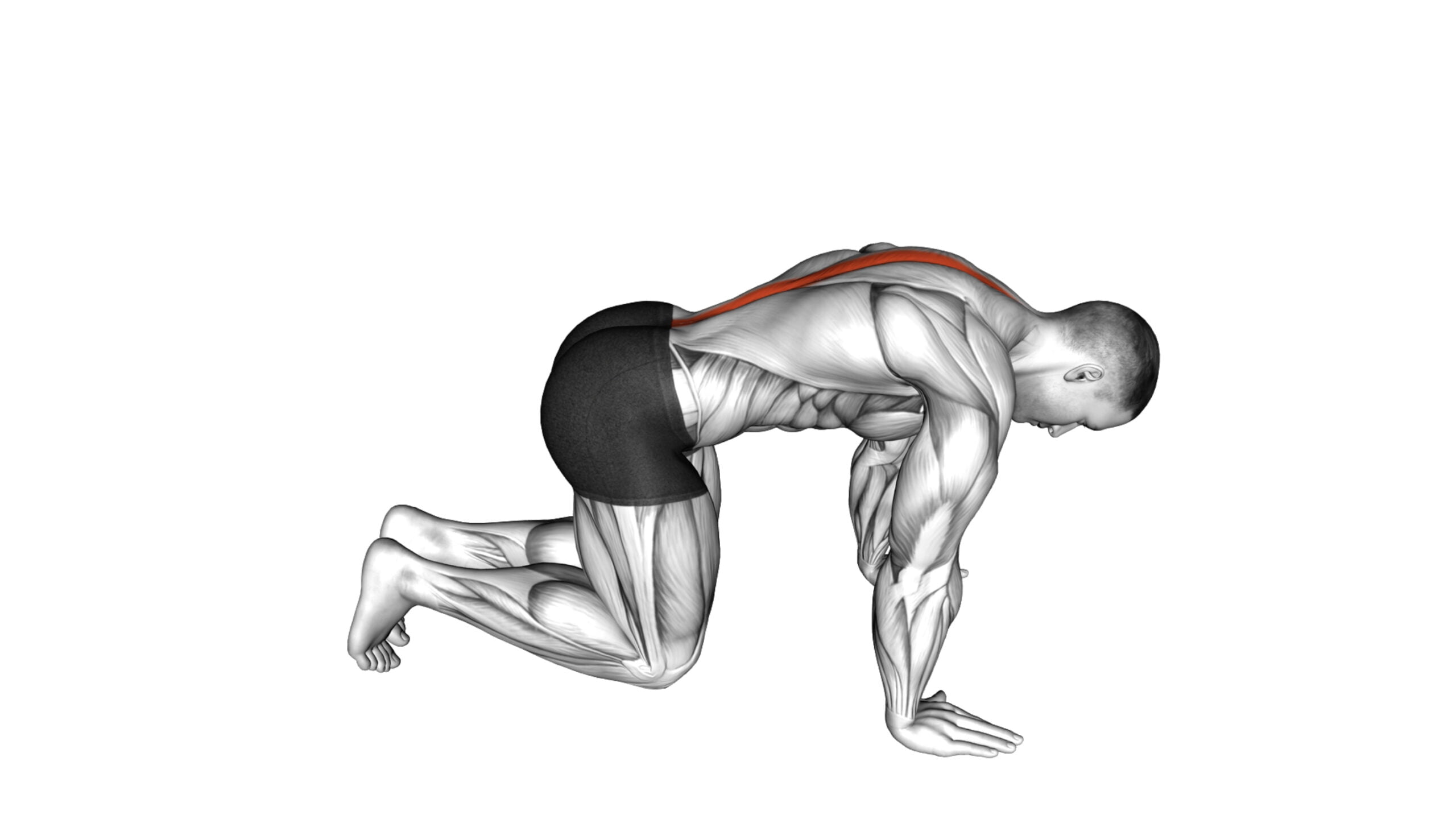
Strengthening your back goes beyond the superficial muscles you see in the mirror; it dives deep into a lesser-known yet vital group called the multifidus muscles. These slender muscles run along your spine, acting like supportive cables keeping everything stable and aligned.
With over a decade of experience as a physical therapist specializing in spinal health, I’ve seen firsthand how targeted exercises for multifidus muscles can transform patients’ lives by mitigating chronic back pain and improving core stability.
Engaging these hidden heroes of your back not only alleviates discomfort but also fortifies your body against future strains. The key is knowledge paired with action—knowing which exercises effectively work these specific fibers to reap maximum benefits.

Ready to empower your posture? Let’s dive in with ten transformative workouts destined to bolster those crucial spine stabilizers. Keep reading; stronger support starts here!
Key Takeaways
- Strengthening the multifidus muscle, located along the spine, is crucial for improving back stability and posture while reducing risks of injury and lower back pain.
- Exercises like Bird Dog, Kneeling Leg Half Circle, Reverse Plank, and Superman Row with Towel target the multifidus muscle effectively when performed regularly.
- It’s essential to listen to your body during workouts to avoid overexertion; start slowly and incorporate a variety of exercises for comprehensive strength building.
- Rest days are important as they allow muscles time to recover; staying hydrated enhances muscle performance and aids in recovery processes.
- Consistency in performing these exercises leads to better overall spinal health, increased mobility, flexibility, decreased back pain, and improved quality of life.
What is the Multifidus Muscle and its Importance
The multifidus muscle, often overlooked yet pivotal for spinal health, stretches from the sacrum to the cervical spine and plays a crucial role in keeping our back strong. These muscles are the backbone’s support system, assisting with rotation and maintaining proper alignment of the vertebral column.
They work silently behind the scenes every time you twist, bend, or stand tall. Without a robust multifidus muscle group, your spine would be at a higher risk of injury and instability which could amplify issues like lower back pain or herniated lumbar discs.
Exercises for multifidus muscles not only fortify these vital fibers but also synergize with other core components like transversus abdominis to craft a protective girdle around your lower back.
This collaboration is key to enhancing overall core strength and ensuring fluid motion throughout daily activities—whether that involves lifting heavy objects or simply moving about freely without discomfort.
Investing time in strengthening this muscle prepares your body for life’s demands while safeguarding against potential strains or sprains that can sideline even the most active individuals.
As we turn to explore various exercises specifically designed to bolster this deep-set muscle group, remember their significance in fostering a resilient spine capable of handling whatever comes its way.

Benefits of Exercising the Multifidus Muscle
Exercising the multifidus muscle offers a range of benefits including improved posture, reduced risk of injury, better spinal stability, decreased back pain, and increased mobility and flexibility.
These exercises can help you maintain a healthy and strong spine for overall wellness.
Improved posture
A strong multifidus muscle keeps the spine upright and helps maintain a healthy curve. Stand tall with confidence as these exercises sculpt your back muscles, making slouching a thing of the past.
Incorporating moves like Bent Leg Kickback and Lying Floor Hyperextension into your daily routine straightens out any poor posture habits, setting you up for both comfort and poise.
Engaging in workouts specifically targeting the multifidus doesn’t just boost your stance; it fortifies your spinal support system. Daily activities become easier with a sturdy backbone supported by Superman Rows and Cat Stretches.
As you cultivate this muscular shield for your lumbar spine, notice how you carry yourself differently—the way you walk, sit, and even rest improves substantially.
Moving beyond mere alignment benefits..
Reduced risk of injury
Strengthening the multifidus muscle acts as a bodyguard for your spine, shielding it from potential harm. Regular exercises geared towards this important stabilizer provide robust support to the vertebral column, helping you dodge injuries that could sideline your daily activities or sports endeavors.
As you enhance stability in the lumbar region and pelvis through targeted workouts, you’re less likely to experience those pesky strains or sprains when twisting, bending, or lifting.
Cultivating stronger multifidi muscles equips your back with extra layers of protection during active movements or even simple tasks like carrying groceries.
Working out these deep spinal muscles pays off by keeping your posture aligned and movement fluid. This helps not only athletes aiming for peak performance but also folks looking to breeze through chores without wincing in pain afterwards.
A solid core built upon a well-conditioned multifidus ensures each step you take is secure and balanced, bringing down the chances of an awkward twist resulting in injury. Dive into exercises like bird dogs and reverse planks; they are your tools for constructing a more resilient frame capable of tackling any physical challenge with reduced fear of hurting yourself.

Better spinal stability
Exercising the multifidus muscle is vital for achieving better spinal stability. Strengthening this muscle through targeted exercises can significantly enhance the support and alignment of the spine, reducing the risk of back pain and injury associated with poor posture or weak spinal support.
As a result, incorporating multifidus muscle exercises into your routine can play a key role in promoting overall back health and function, providing long-term benefits such as improved mobility, reduced discomfort, and enhanced physical performance.
By targeting the multifidus muscle with specific exercises aimed at strengthening it, individuals can effectively promote better spinal stability. This leads to more significant support for the spine and reduces factors contributing to potential back pain or injury.
Decreased back pain
Strengthening the multifidus muscle through targeted exercises can lead to a reduction in back pain. By engaging in movements that specifically target and strengthen this muscle, individuals can effectively support their spine and alleviate discomfort associated with lower back pain.
Incorporating routines like Bird Dog, Kneeling Leg Half Circle, Lying Floor Hyperextension with Towel, Reverse plank, Superman Row with Towel, Leg Over Knee Glute Bridge, and Lying Alternate Flutter Kick can contribute to decreased back pain by enhancing the strength and function of the multifidus muscle.
Increased mobility and flexibility
Strengthening the multifidus muscle leads to increased mobility and flexibility, allowing for a wider range of motion in everyday activities. This improved function can enhance overall physical performance and make it easier to engage in various exercises and movements without discomfort or limitation.
Additionally, better flexibility can contribute to reduced stiffness and tension in the body, promoting greater ease of movement throughout the day.
Regular exercises targeting the multifidus muscle promote better spinal health by enhancing its stability and support. As a result, individuals may experience improved posture and reduced risk of injuries related to compromised spinal alignment.
10 Best Exercises for Strengthening the Multifidus Muscle
Incorporating these 10 effective exercises for multifidus muscles into your workout routine can help improve spinal stability, reduce back pain, and increase mobility and flexibility.
These exercises target the multifidus muscle, helping to strengthen and support the lower back and core.
1. Bird Dog
The Bird Dog exercise is a top choice for strengthening the multifidus muscle. To perform this exercise, get on all fours and extend one arm straight out in front of you while simultaneously extending the opposite leg straight back behind you.
This movement requires balance and stability, effectively targeting the multifidus muscle to improve strength and alleviate back pain. Physical therapists and fitness experts often recommend incorporating the Bird Dog into regular workout routines to enhance overall back strength and prevent future injuries.
Strengthening the multifidus muscle through exercises like Bird Dog can significantly contribute to improving posture, spinal stability, and reducing back pain. Incorporating this exercise provides a practical benefit by enhancing core strength and promoting better body alignment, which are crucial for preventing injury during physical activities or everyday movements.
2. Kneeling Leg Half Circle
Transitioning from the Bird Dog exercise, the Kneeling Leg Half Circle is another great way to strengthen the multifidus muscle. To perform this exercise, start by kneeling on all fours and then extend one leg out to the side in a half-circle motion.
This movement engages and activates the multifidus muscle, helping to improve spinal stability and alleviate lower back pain. With regular practice done with proper form and control, this exercise can contribute to better posture and reduced risk of injury.
By incorporating the Kneeling Leg Half Circle into your workout routine, you’ll be taking a significant step towards strengthening your multifidus muscles for improved spinal health and overall well-being.
3. Lying Floor Hyperextension with Towel
Before moving on to the Lying Floor Hyperextension with Towel, let’s take a look at another effective multifidus muscle exercise. Now, for the Lying Floor Hyperextension with Towel – an excellent strengthening workout targeting key muscles of your lower back and core.
This exercise enhances stability and support in the spinal region by engaging the multifidus muscle effectively. By incorporating a towel into this routine, you can elevate resistance levels, intensifying the challenge for these crucial muscles.
Engaging in regular sessions of the Lying Floor Hyperextension with Towel strengthens your multifidus muscle significantly, ultimately contributing to preventing lower back pain and improving overall spinal health.
4. Reverse plank
The reverse plank is crucial for strengthening the multifidus muscle, which plays a key role in spinal stabilization. By lifting your body off the ground while facing upwards and using your arms and legs for support, this exercise targets and strengthens the muscles around the spine.
Implementing reverse planks into your regular workout routine can lead to improved core strength and overall spinal health.
This effective exercise helps enhance posture, reduce the risk of back pain, and build muscle strength around the spine. It is suitable for individuals of all fitness levels and can be done at home with just a yoga mat.
5. Superman Row with Towel
Transitioning from the Reverse Plank to the Superman Row with Towel, this exercise is a valuable addition to any multifidus muscle strengthening routine. To execute the Superman Row with Towel, begin by lying face down on the floor with a towel beneath your chest.
With arms extended, lift your chest and arms off the ground while pulling each end of the towel towards your hips.
This effective workout directly targets and engages the multifidus muscle, contributing to improved core strength and stability. Proper form and controlled movements are essential for maximizing benefits and avoiding strain or injury when performing this exercise.
6. Alternating Superman
The Alternating Superman is a powerful exercise that effectively targets the multifidus muscle. Lying on your stomach, you raise alternate arms and legs off the ground, engaging the back muscles for improved posture and reduced risk of back pain.
This exercise can be easily incorporated into your routine and done at home without any special equipment, contributing to a stronger and more stable back when combined with other multifidus-targeting exercises.
By performing the Alternating Superman with proper form, you can avoid straining the lower back while reaping its benefits.
7. Bent Leg Kickback (kneeling)
The Bent Leg Kickback (kneeling) is an effective exercise that targets the multifidus muscle, crucial for maintaining proper posture and preventing back pain. This low-impact exercise helps to improve stability and strength in the lower back and pelvic region, contributing to overall spinal health.
By adding the Bent Leg Kickback (kneeling) to your multifidus muscle strengthening routine, you can enhance core strength and stability while alleviating lower back discomfort.
Incorporating this exercise into a workout routine can yield practical benefits like improved mobility, reduced risk of injury, and better spinal alignment. By performing the Bent Leg Kickback (kneeling) regularly, individuals can aim towards achieving specific goals related to enhancing their core strength and maintaining a healthy spine.
8. Leg Over Knee Glute Bridge
The Leg Over Knee Glute Bridge is an excellent exercise to strengthen the multifidus muscle. This movement specifically targets the lower back muscles and glutes, thereby enhancing stability and strength in that area.
By incorporating this exercise into your routine, you can effectively prevent and alleviate lower back pain while also improving overall spinal support.
When performing the Leg Over Knee Glute Bridge, you engage multiple muscle groups simultaneously, making it a highly efficient workout for your core and posterior chain. Adding resistance such as a resistance band or weight can further challenge these muscles for greater strength gains.
9. Lying Alternate Flutter Kick
The Lying Alternate Flutter Kick is a beneficial exercise for targeting the multifidus muscle, promoting spinal stability and strength. To perform this exercise, lie on your back with legs straight.
Lift one leg slightly off the ground while keeping it straight, then alternate with the other leg in a fluttering motion. This movement effectively engages the lower back muscles, including the multifidus, to enhance spine support and stability.
Maintaining a neutral spine and engaging core muscles during this exercise maximizes its effectiveness. By incorporating the Lying Alternate Flutter Kick into your workout routine consistently, you can contribute to improved posture, reduced risk of back pain, and enhanced athletic performance.
10. Cat Stretch
Transitioning from the Lying Alternate Flutter Kick, the Cat Stretch is a popular exercise known for its effectiveness in strengthening the multifidus muscle. When performing this exercise, individuals get on all fours and arch their back upward like a cat, holding the pose for several breaths.
This simple yet powerful movement helps improve flexibility and mobility in the spine while activating and toning the multifidus muscle. Regular practice of the Cat Stretch can contribute to alleviating back pain and enhancing overall spinal health.
Tips for Incorporating Multifidus Muscle Exercises Into Your Routine
When incorporating exercises for multifidus muscles into your routine, find a schedule that works best for you and start slowly to prevent injury. Listen to your body and vary the exercises to keep them challenging, while also incorporating rest days and staying hydrated for optimal results.
Find the best schedule
Perform these multifidus muscle exercises at least 2-3 times a week to see significant improvements in strength and stability. It’s recommended to start with fewer repetitions and gradually increase the intensity and duration of the exercises.
Don’t forget to consult a fitness professional or physical therapist for personalized advice based on your specific needs and goals.
Start slowly
Gradually increase the intensity and duration of these exercises as your strength and endurance improve. This approach will help prevent overexertion and minimize the risk of injury, allowing your multifidus muscles to adapt gradually to the new demands placed on them.
Listen to your body
Pay close attention to your body’s signals as you engage in multifidus muscle exercises. If you feel any sharp or shooting pain, stop immediately and seek advice from a healthcare professional.
Be mindful of any signs of fatigue or overexertion, and make adjustments to your routine as needed. It is essential to prioritize safety and pay heed to any discomfort while strengthening the multifidus muscles.

Vary exercises and make them more challenging
To maximize the effectiveness of multifidus muscle exercises, it’s crucial to vary your routine and gradually increase the difficulty. Incorporating different variations of exercises such as bird dog, reverse plank, and kneeling leg half circle can help target the multifidus muscles from various angles while keeping your workouts engaging.
Utilizing resistance bands or towels during these exercises can add challenge by increasing resistance and intensity. Additionally, aiming to extend the duration or repetitions of each exercise can further elevate the difficulty level and enhance its impact on strengthening the multifidus muscles.
Increasing exercise variation and challenging yourself over time are essential in optimizing multifidus muscle development. By incorporating different techniques and progressively intensifying your workouts, you can effectively target this vital muscle group for improved strength and stability throughout your body.
Stay hydrated and incorporate rest days
Maintaining adequate hydration is vital for supporting the function and health of your multifidus muscles. Dehydration can lead to muscle cramps, reduced flexibility, and increased risk of injury during exercise.
By drinking enough water throughout the day, you can optimize muscle performance and recovery processes.
Incorporating rest days into your workout routine allows your multifidus muscles time to repair and grow stronger. Overtraining can lead to fatigue, decreased performance, and an increased chance of injury.
Conclusion

In closing, the 10 exercises for multifidus muscles offer a practical and efficient way to strengthen and stabilize the spine. By incorporating these exercises into your routine, you can experience significant improvements in posture, reduced risk of injury, better spinal stability, decreased back pain, and increased mobility.
It’s important to note that these strategies are not only impactful but also easy to implement. Remember that consistency is key – starting slowly and gradually increasing the challenge will bring about positive results over time.
Keep moving forward with confidence on your path toward a stronger and healthier back.
FAQs
1. What are multifidus muscles and why are they important?
Multifidus muscles are small, deep muscles located along your spinal column that help stabilize your vertebrae during movement and maintain good posture to manage low back pain effectively.
2. Can exercising multifidus muscles relieve my chronic low back pain?
Absolutely, strengthening the lumbar multifidus through targeted exercises can provide support to your spine, reducing stress on vertebral discs and easing chronic lower back pain.
3. What kind of exercises target the lumbar multifidus effectively?
Exercises like squats, which encourage contraction of the abdominals while keeping a straight spine; pushups for promoting spinal stability; and specific physical therapy regimens focused on isometric holds can fortify these key extensor muscles.
4. How do I know if I’m working out my lumbar multifidus correctly?
Your health professional or physical therapist can guide you with techniques ensuring proper form such as aligning shoulders over wrists in pushups or maintaining a neutral spine in squats to isolate the deep muscle layers effectively.
5. Is it safe to exercise these muscles if I have a herniated disc or other spinal issues?
Before beginning any workout plan involving a sensitive area like your spinous processes or transverse processes, seek advice from healthcare experts who might recommend adjunct methods such as neuromodulation alongside an approved exercise regimen for safety.
6. Are there other benefits besides alleviating back pain by exercising these particular core muscles?
By focusing on strengthening your multifidus along with related muscle groups like obliques and transverse abdominis within prescribed routines, you also improve overall posture and intra-abdominal pressure contributing greatly towards long-term spine health.

Author
Years ago, the spark of my life’s passion ignited in my mind the moment I stepped into the local gym for the first time. The inaugural bead of perspiration, the initial endeavor, the very first surge of endorphins, and a sense of pride that washed over me post-workout marked the beginning of my deep-seated interest in strength sports, fitness, and sports nutrition. This very curiosity blossomed rapidly into a profound fascination, propelling me to earn a Master’s degree in Physical Education from the Academy of Physical Education in Krakow, followed by a Sports Manager diploma from the Jagiellonian University. My journey of growth led me to gain more specialized qualifications, such as being a certified personal trainer with a focus on sports dietetics, a lifeguard, and an instructor for wellness and corrective gymnastics. Theoretical knowledge paired seamlessly with practical experience, reinforcing my belief that the transformation of individuals under my guidance was also a reflection of my personal growth. This belief holds true even today. Each day, I strive to push the boundaries and explore new realms. These realms gently elevate me to greater heights. The unique combination of passion for my field and the continuous quest for growth fuels my drive to break new ground.





